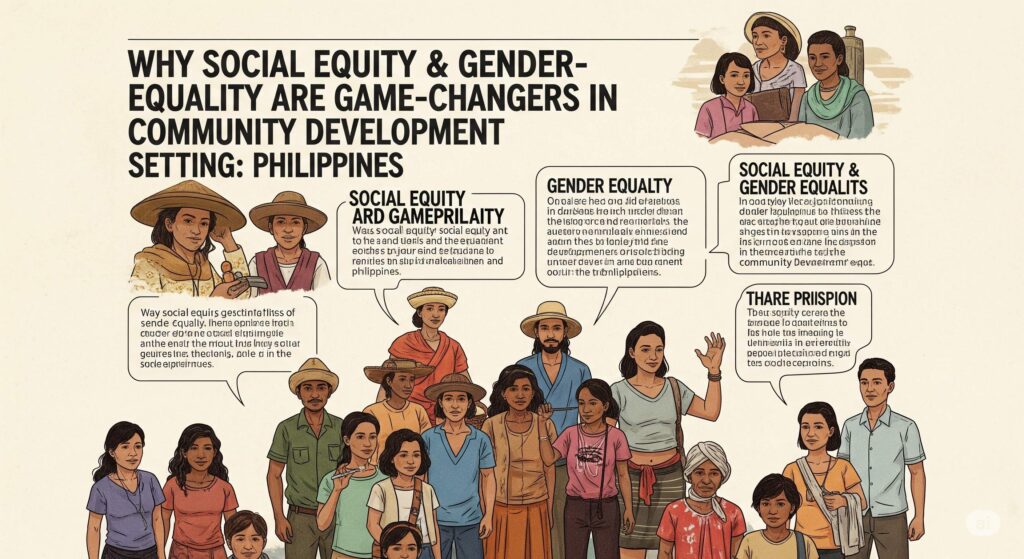Hey, equity advocate! Let’s unpack why social equity (fairness for all) and gender equality (equal rights for every gender) are the secret ingredients to real community progress. Think of them as the GPS guiding us to inclusive, lasting change. Let’s roll!
Step 1: Icebreaker – What’s Fair?
⚖️ Quick Debate:
Is it “fair” that…
- A girl walks 2km for water while her brother goes to school?
- A disabled person can’t vote because the polling station has stairs?
Discuss: What’s one example of inequity in your community?
Step 2: What Are Social Equity & Gender Equality?
💡 Definitions:
- Social Equity : Ensuring everyone has access to resources (education, healthcare, jobs) based on their needs .
- Example : Free lunch programs for low-income students.
- Gender Equality : Removing barriers so all genders can thrive equally.
- Example : Laws against workplace discrimination.
🌟 Why They Matter in Development:
- Inclusive Solutions : When marginalized groups (women, Indigenous people, the poor) lead, projects reflect real needs.
- Trust : Communities back initiatives they helped design.
Step 3: The Magic of Combining Equity + Equality
🌍 Case Study 1 – Bangladesh’s Solar Sisters
- Problem : Rural women lacked electricity and income.
- Action : A program trained women to sell solar lamps.
- Result :
- Families got light for studying/crafts.
- Women became breadwinners, gaining respect.
🌍 Case Study 2 – Colombia’s Peace Process
- Problem : Women were excluded from peace talks.
- Action : Activists demanded seats at the table.
- Result : The final agreement included protections for female ex-combatants and survivors.
Step 4: Challenges to Watch For
⚠️ Roadblocks:
- Cultural Norms : “Men are leaders, women are caregivers.”
- Tokenism : Including marginalized groups just for show.
- Power Grabs : Rich elites hijacking projects for profit.
💡 Fix-It Tips:
- Amplify Marginalized Voices : Let them lead meetings, not just attend.
- Data-Driven : Track who benefits (e.g., “Are girls’ school grades improving?”).
- Call Out Bias : Challenge stereotypes openly.
Step 5: How to Measure Success
📊 Indicators of Progress:
- Social Equity :
- Lower poverty rates in marginalized groups.
- More low-income students graduating.
- Gender Equality :
- More women in leadership roles.
- Reduced gender-based violence.
📈 Example:
In Rwanda, 61% of lawmakers are women (highest globally!) → better laws on childcare and land rights.
Step 6: Your Equity & Equality Action Plan
🚀 Take Action:
- Today : Challenge a sexist joke or stereotype.
- This Month : Join a group advocating for equity (e.g., LGBTQ+ rights, anti-poverty).
- Long-Term : Push for inclusive policies at school/work (e.g., gender-neutral bathrooms).
💬 Final Thought:
“Injustice anywhere is a threat to justice everywhere.” – MLK Jr.
You’re now equipped to champion equity and equality in your community! Remember: progress isn’t just about “helping” people—it’s about empowering them to lead. Questions? I’m here! 😊


